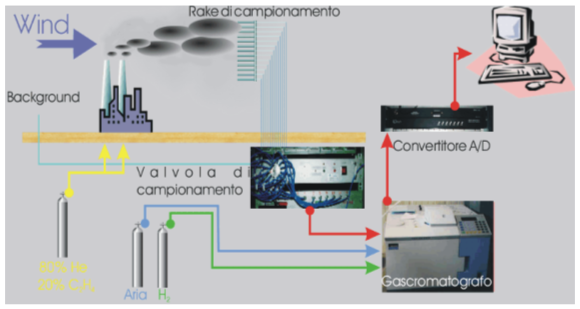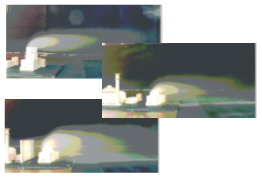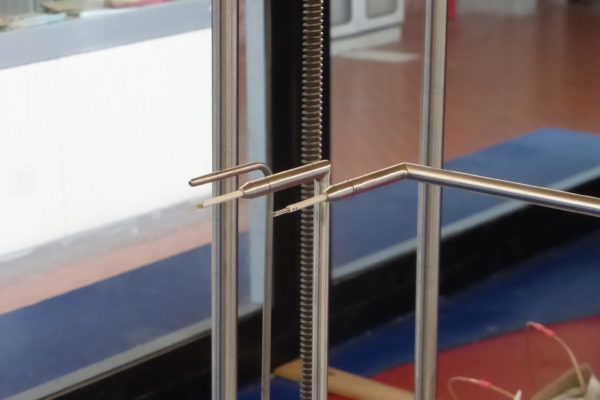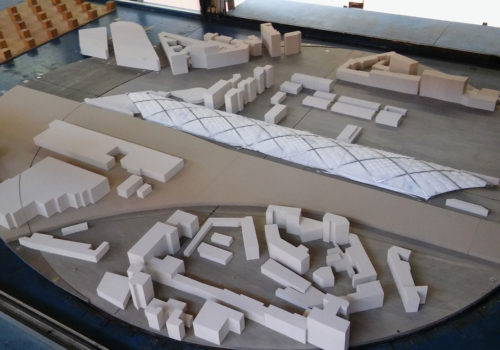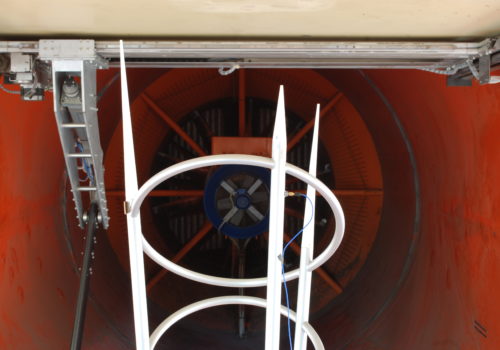The analysis of the diffusion of gaseous pollutants emitted by several kind of sources (chimneys, power plants, waste incinerators, industrial complexes) is nowadays an important topic and it is highly relevant for environmental impact studies.
The scaled wind tunnel analysis allow, at a relatively low cost, to perform tests in several different conditions; results obtained by diffusional numerical codes can then be checked even in those situation where simulation is often very difficult (such as for buildings close to the source or complex orography sites).
The used instrumentation is composed by some flow meters for the regulation of the tracer exit flow (the tracer is normally composed by hydrocarbons and other gas mixtures) in order to get the correct buoyancy conditions; the resulting gas concentration at some given sampling positions is made by sampling lines connected to a FID unit (Flame Ionization Detector).
Samples are collected by a 24-ways sample line connected to two PC-controlled pumps and sequentially sent to the FID, which allows, after a calibration procedure, to evaluate the average hydrocarbon concentration.
